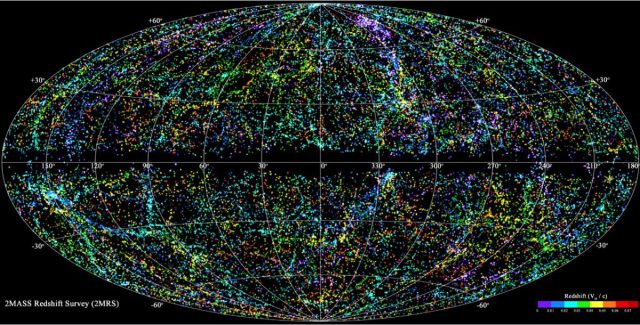Is the lopsided Universe telling us we need new theories?
Ars Technica » Scientific Method 2014-03-09

The Universe is incredibly regular. The variation of the cosmos' temperature across the entire sky is tiny: a few millionths of a degree, no matter which direction you look. Yet the same light from the very early cosmos that reveals the Universe's evenness also tells astronomers a great deal about the conditions that gave rise to irregularities like stars, galaxies, and (incidentally) us.
That light is the cosmic microwave background, and it provides some of the best knowledge we have about the structure, content, and history of the Universe. But it also contains a few mysteries: on very large scales, the cosmos seems to have a certain lopsidedness. That slight asymmetry is reflected in temperature fluctuations much larger than any galaxy, aligned on the sky in a pattern facetiously dubbed "the axis of evil.”
The lopsidedness is real, but cosmologists are divided over whether it reveals anything meaningful about the fundamental laws of physics. The fluctuations are sufficiently small that they could arise from random chance. We have just one observable Universe, but nobody sensible believes we can see all of it. With a sufficiently large cosmos beyond the reach of our telescopes, the rest of the Universe may balance the oddity that we can see, making it a minor, local variation.
Read 24 remaining paragraphs | Comments